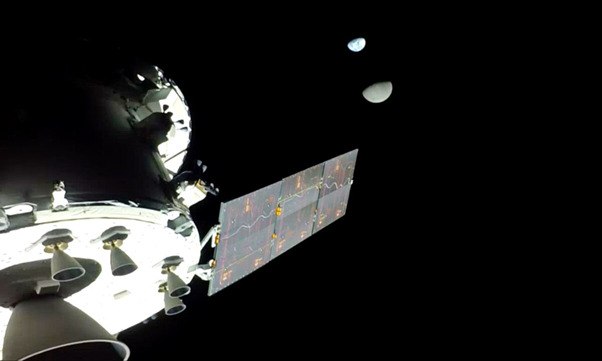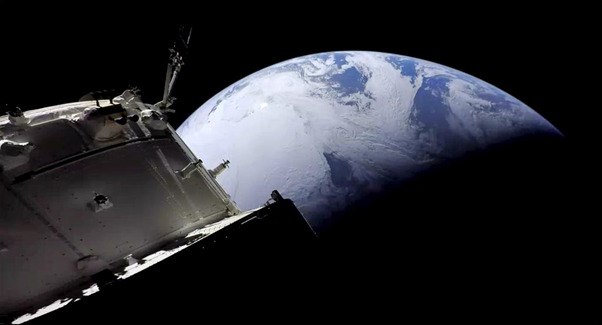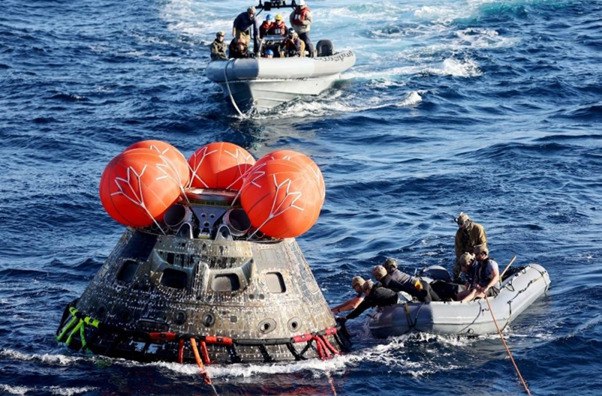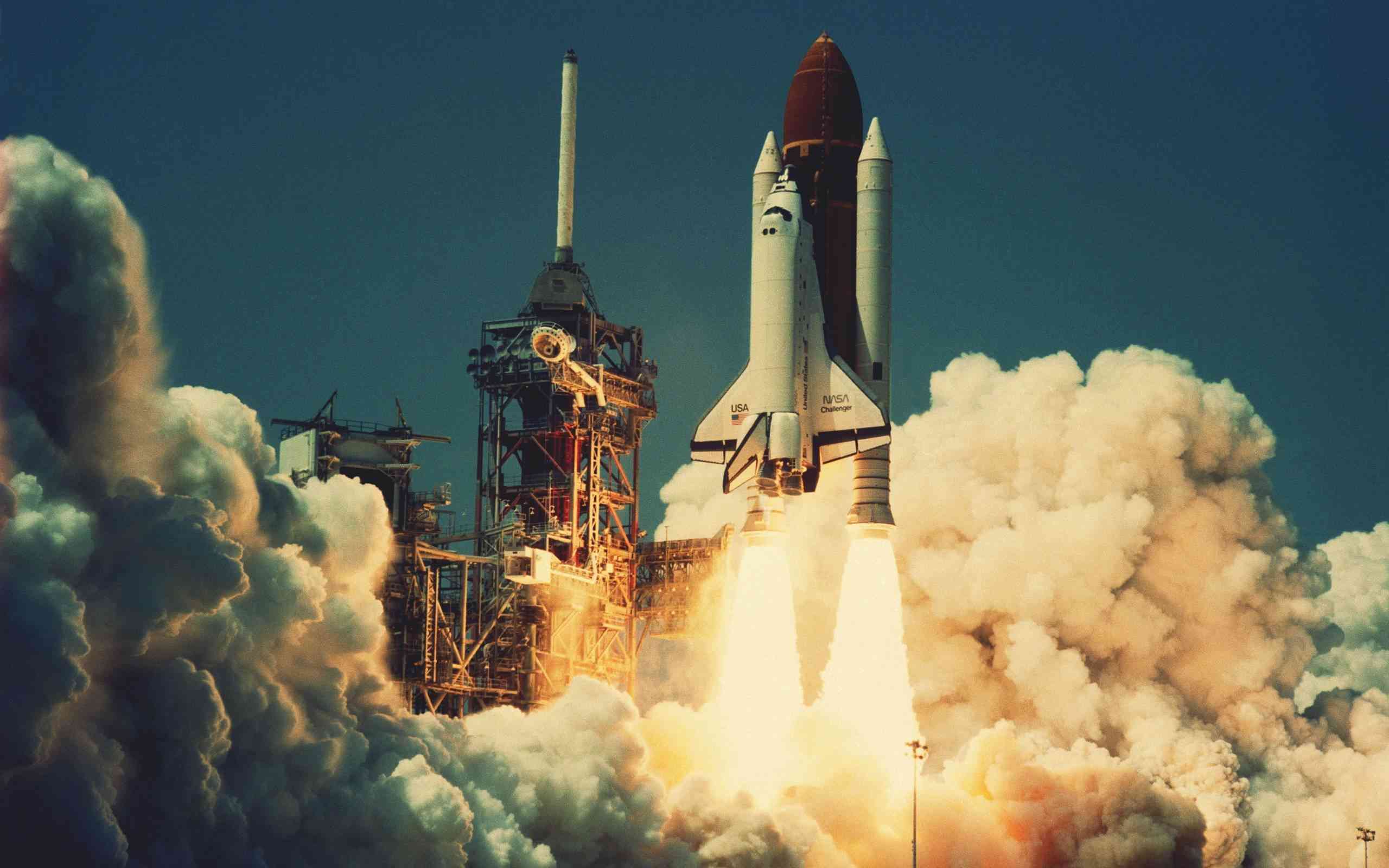NASA’s gumdrop-shaped Orion capsule recently splashed down safely in Mexico’s Baja California Peninsula after completing an uncrewed voyage around the moon. This was done to demonstrate how lunar astronauts could return safely. Orion returned after a 25-day mission after it was launched on 16th November, from the Kennedy space station.

The capsule which stands 322 feet long, and weighs about 5.75 million pounds, hit the atmosphere at around 32/33 times the speed of sound and with a temperature of about 5,000 degrees Fahrenheit. The spacecraft was later moved by a Navy ship. Orion happened to coincidentally land on the 50th anniversary of the Apollo 17 landing in 1972. It is the first spacecraft to reach the moon ever since 1972. Orion was the first flight of the new Artemis program by NASA and is named after Apollo’s mythological twin sister. The project has been developed to establish a base for future human exploration of Mars.
The costs incurred in sending the test flight were said to be estimated at around $4 billion. While there were no humans in the spacecraft, NASA managers were all excited since the project had been delayed after issues surrounding hurricanes and finances. Further two earlier attempts to launch Artemis got delayed. The first attempt in August failed since they were unable to get one of the four engines to the required temperature. The second attempt in September also failed due to a hydrogen leak.

NASA also held a splashdown party at the Johnson Space Center in Houston to celebrate the success with their employees and their families. Orion Capsule also used a new heat shield which has never been tested on the orbit before. Mike Sarafin, the mission manager, said nobody could have ever imagined a mission this successful. Once Orion is back at the Kennedy space station, further inspections will be held, and if nothing is amiss, then NASA would announce the name of the four astronauts who will go on the lunar mission. The four astronauts will be picked amongst 42 active astronauts who are now stationed at Johnson’s space center.
Initially, the capsule was to land off the southern California coast, but forecasts talking about a possibility of high wind made NASA change the location. The farthest Orion went was about 430,000 km from the earth. The spacecraft captured pictures of the moon and earth

As the capsule descended, congratulatory messages poured in from all over the world, and NASA called the descent as close to perfect. NASA needed a successful return of the spacecraft so they could stay on track for the next trip to the moon mostly in 2024 with four astronauts whose names are yet to be revealed. This will later be followed by a lunar landing consisting of two people in 2025. The ultimate aim of this expedition is for humans to set foot on mars by the 2030s.
NASA spent billions on the Artemis mission in order collectively benefit to mankind while also ensuring American leadership in exploration. They also intend to send the first woman and first person of color to the moon.
© Vygr Media Private Limited 2022. All Rights Reserved.























